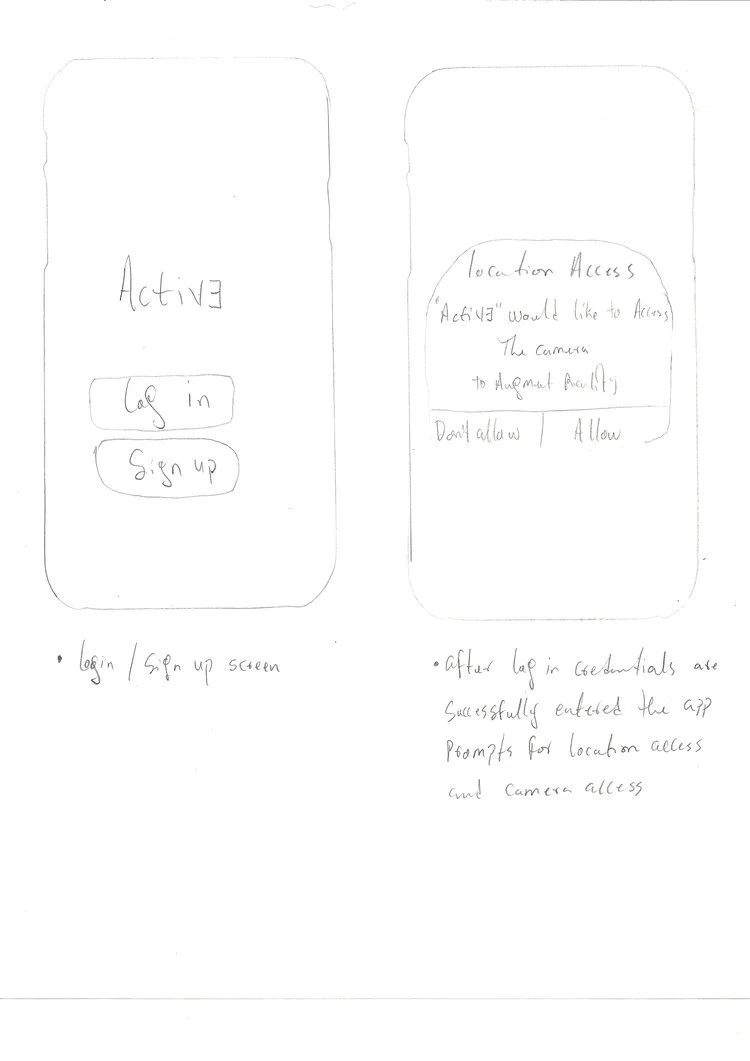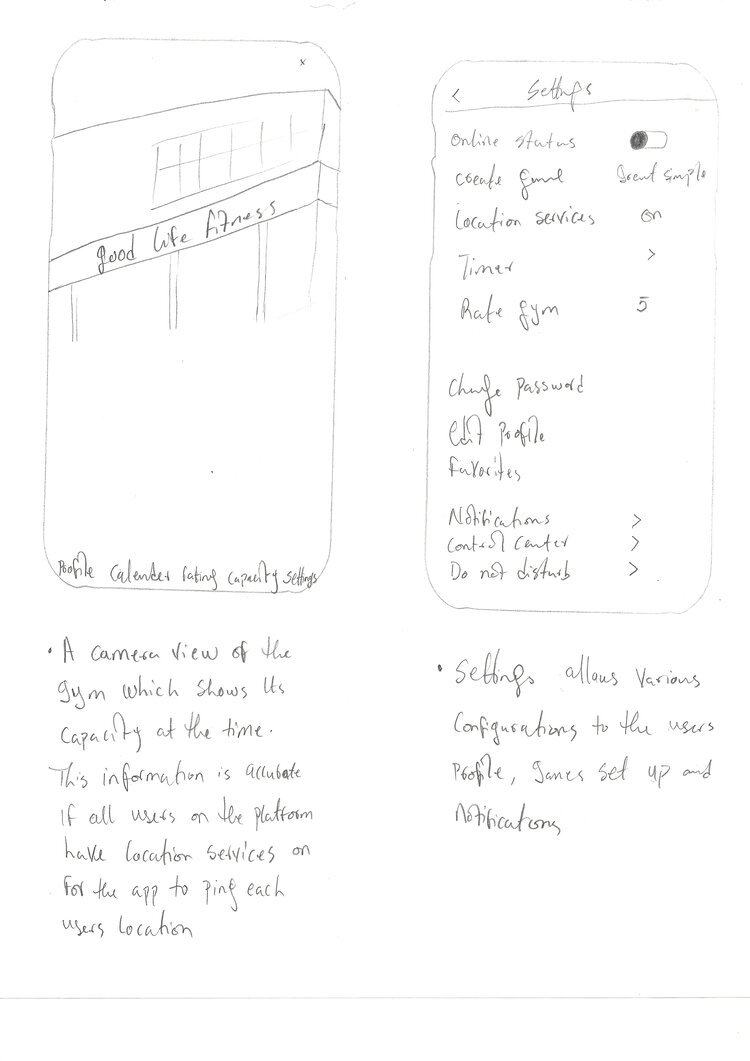ACTIVE GYM FINDER
Mobile App Design
For a university project in a team of 4, tasked with designing a user interface for an application. My contribution was creating a Low-fi and a Hi-fi prototype, to do this we had to understand who the users were and the problem to be solved. In identifying the needs and requirements, the conceptual idea of ACTIVE is to appeal to gym members and owners, athletes, personal trainers and active people.
ACTIVE uses augmented reality to find gym locations allowing users view gym amenities, set up or join ongoing games. The app provides information on the particular gyms rating and uses location services to tell users the current capacity.
Case Study: ACTIVE GYM FINDER
Project Overview
Project Type: University Group Project
Objective: To design a user interface for a mobile application that utilizes augmented reality to help users find gym locations, view amenities, join ongoing games, and check gym capacities.
Role: UI/UX Designer Team Member (1 of 4)
Tools: Figma, Adobe Photoshop
Project Dynamic: Team project
Contribution: Low-fi and Hi-fi Prototyping
Problem Statement
The main challenge was to design an intuitive mobile application that would appeal to gym members, gym owners, athletes, personal trainers, and active individuals. The app needed to integrate augmented reality (AR) features and provide real-time information about gym amenities, ongoing activities, and capacity.
Research and Discovery
User Research:
Conducted surveys and interviews with potential users to understand their preferences, needs, and pain points.
Developed user personas representing gym members, gym owners, athletes, and personal trainers.
Competitive Analysis:
Analyzed existing fitness and gym-finding apps to identify their strengths and weaknesses.
Focused on features like location services, gym ratings, and user engagement functionalities.
Key Insights
Users wanted real-time information on gym capacity to avoid overcrowded gyms.
The ability to view gym amenities and join activities via AR was highly desired.
Users preferred a seamless and intuitive interface for quick navigation.
Design Process
1. Ideation and Conceptualization:
Collaborated with team members to outline core features and functionalities.
Created initial sketches and wireframes to visualize the user journey and app layout.
2. Low-fidelity Prototyping:
Developed low-fidelity wireframes to map out the app’s structure and key screens.
Focused on ensuring a logical flow and easy navigation.
3. User Testing (Low-fi):
Conducted usability testing with potential users to gather feedback on the low-fidelity prototypes.
Iterated on designs based on feedback to improve usability and address any pain points.
4. High-fidelity Prototyping:
Created high-fidelity mockups using design tools, ensuring a modern and visually appealing interface.
Integrated AR features for gym location and amenity viewing, and real-time capacity updates.
Developed detailed wireframes to guide the development process.
5. User Testing (Hi-fi):
Conducted another round of usability testing with the high-fidelity prototypes.
Gathered feedback to refine the visual design and improve the user experience.
Key Features
Augmented Reality Gym Finder:
Users can use AR to locate nearby gyms and view amenities.
Real-time Capacity Updates:
Provides information on current gym capacity using location services.
Activity and Game Setup:
Users can set up or join ongoing games and activities at the gym.
Gym Ratings and Reviews:
Users can view and contribute to gym ratings and reviews.
User Profiles:
Personalized user profiles to track activities and preferences.
Results and Impact
User Engagement: Increased interest and engagement from potential users based on user testing feedback.
Intuitive Design: Positive feedback on the ease of use and visual appeal of the app.
Innovative Features: The AR gym finder and real-time capacity updates were highly appreciated by users.
Reflections and Learnings
The importance of iterative design and continuous user feedback.
The value of incorporating innovative features like AR to enhance user experience.
Effective collaboration within a team is crucial for project success.
Conclusion
The ACTIVE GYM FINDER project was a successful university group project that demonstrated our ability to design an intuitive and user-friendly mobile application. The integration of augmented reality and real-time information made the app stand out, providing a valuable tool for gym-goers and fitness enthusiasts.
Link to High-fidelity Mockups and Wireframes:
Notes and Sketches
Design Discovery Phase








